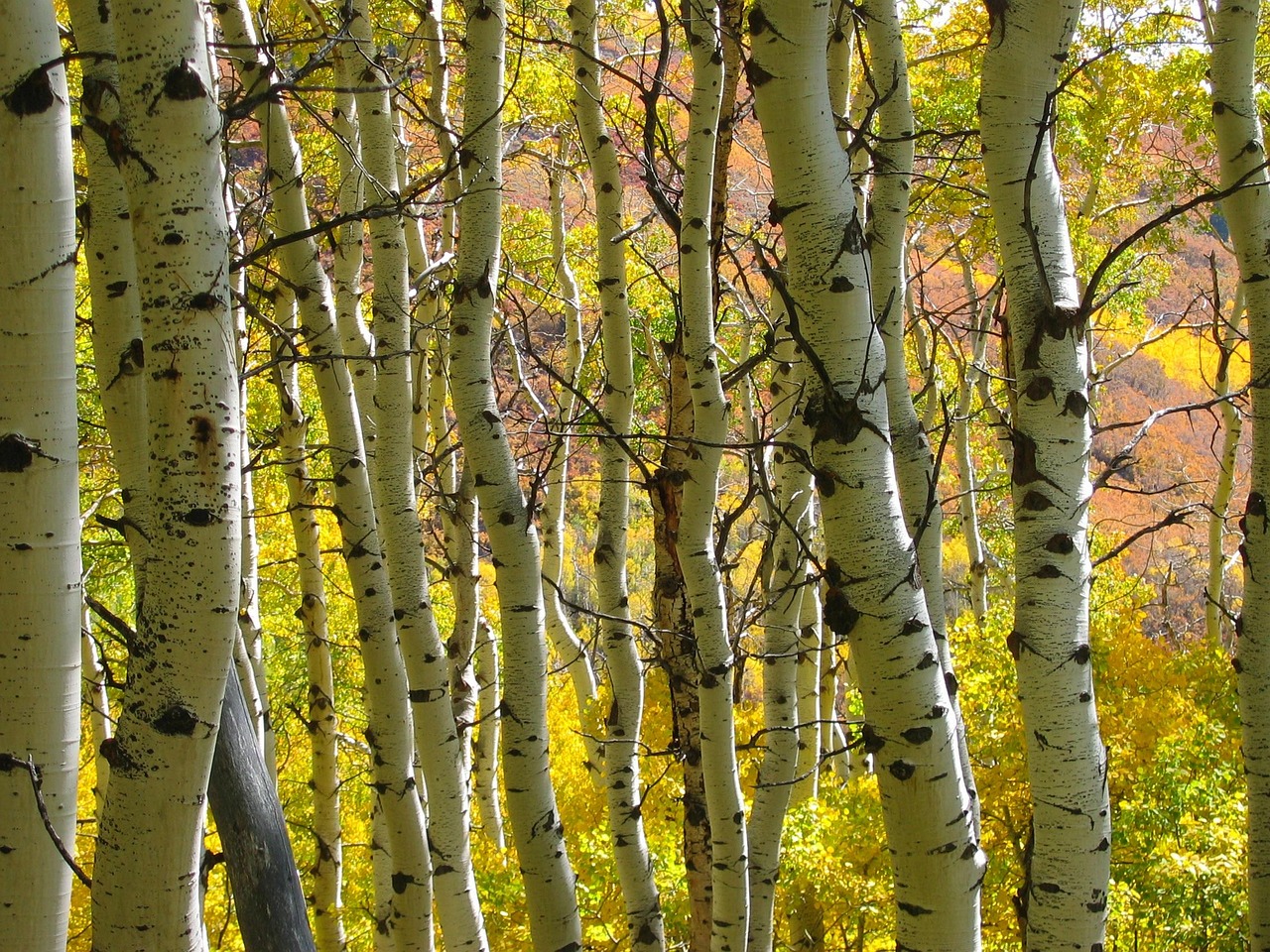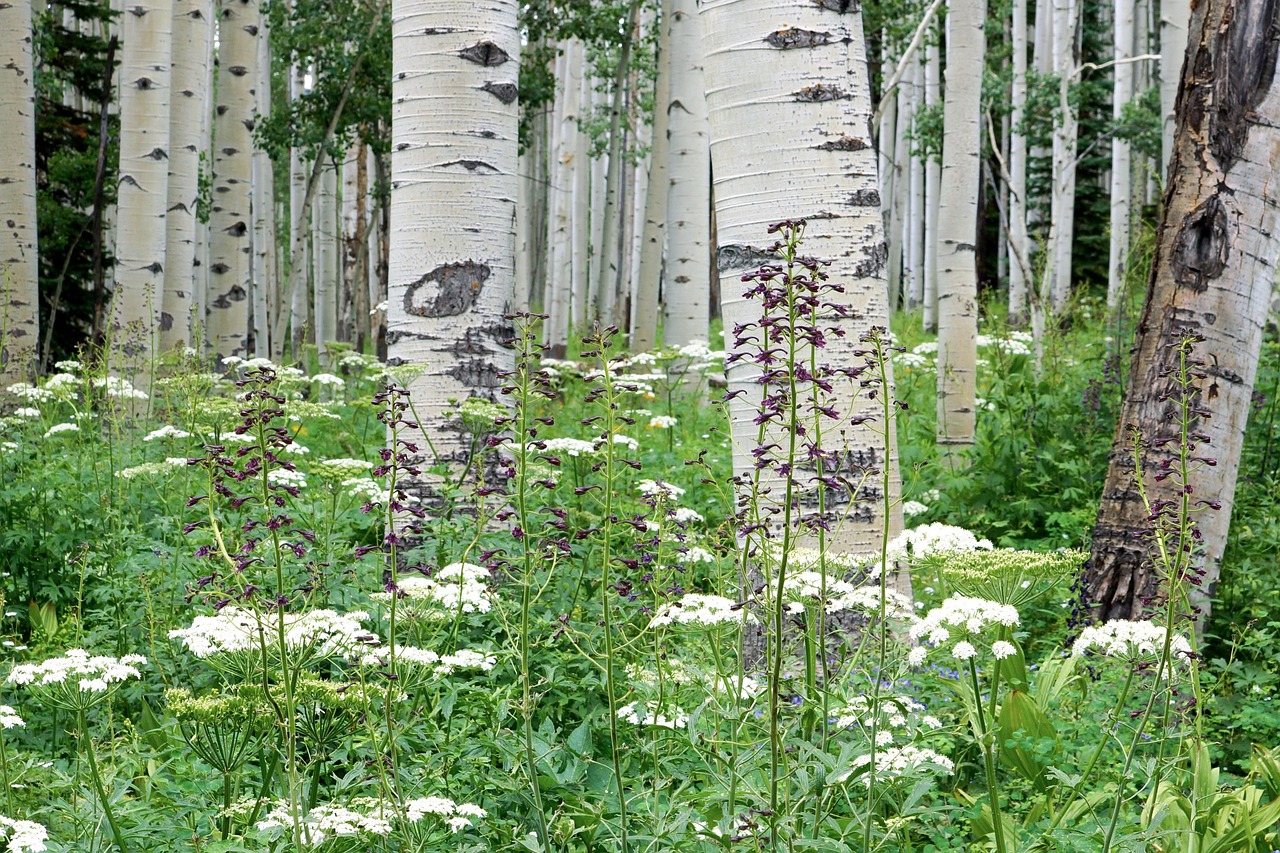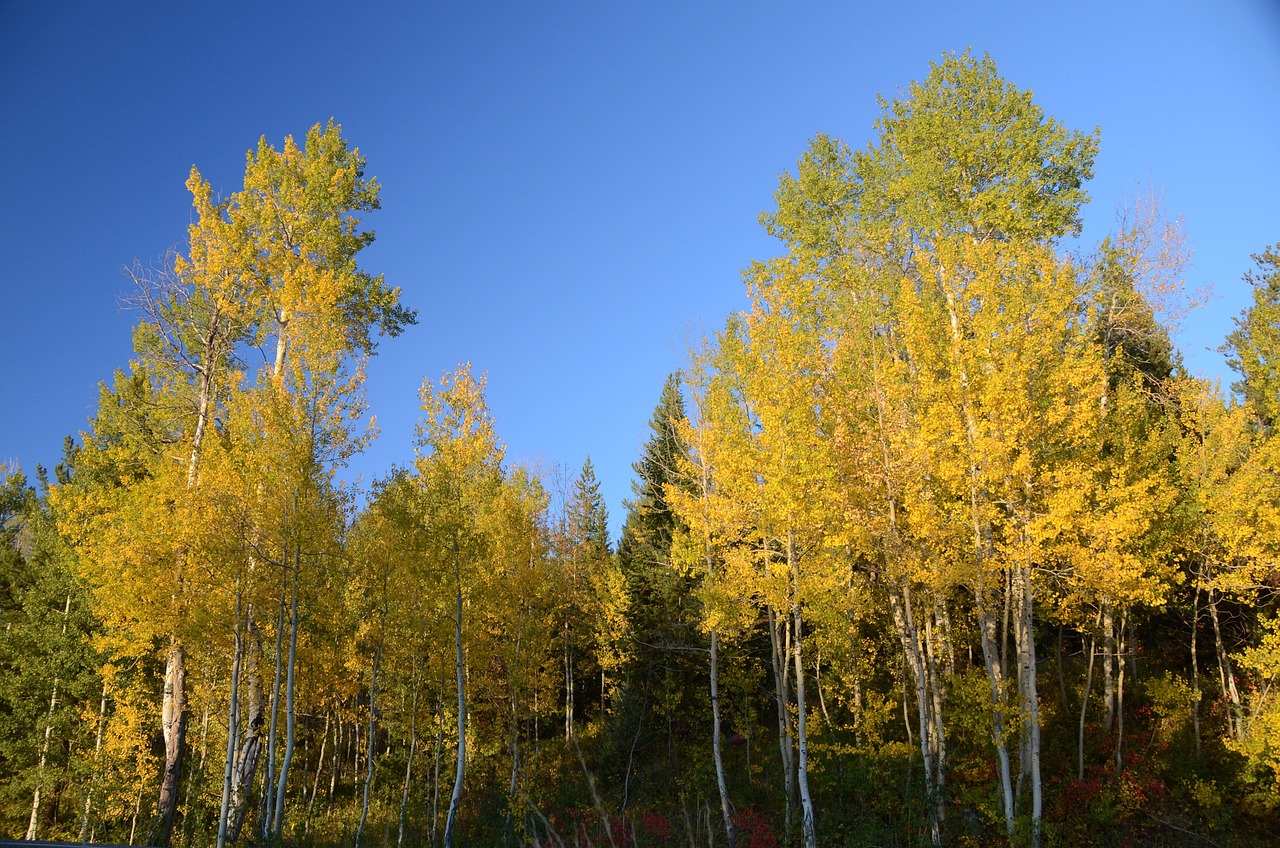Yes, quaking aspen trees can naturally spread to new areas through a process called vegetative reproduction. This occurs when the roots of an existing tree send up new shoots, forming clonal colonies that can extend over large areas.
Understanding Quaking Aspen Trees

Quaking aspen trees, scientifically known as Populus tremuloides, are known for their distinctive white bark and fluttering leaves. These trees are found across North America, thriving in a variety of climates and soils. Their ability to adapt makes them a vital species in many ecosystems. Quaking aspens are not only beautiful but also play a significant role in forest health and wildlife habitat.
One of the most fascinating aspects of quaking aspens is their method of reproduction. Unlike many trees that rely solely on seeds to propagate, quaking aspens primarily reproduce through their root system. This unique characteristic allows them to form extensive groves, often referred to as “clonal colonies.” Each group of trees in a colony is genetically identical, originating from the same root system.
In addition to their ability to reproduce vegetatively, quaking aspens can also produce seeds. However, seed production is less common and often depends on environmental conditions. Seedlings can establish in areas that have been disturbed, such as after a fire or logging event. This dual method of reproduction helps ensure the survival of the species across diverse landscapes.
How Quaking Aspens Spread
The primary method of spreading for quaking aspens is through a process called suckering. This occurs when a mature tree’s roots send up new shoots, which can grow into new trees if they receive enough sunlight and nutrients. This means that a single quaking aspen tree can eventually lead to the creation of a whole grove, sometimes expanding over several acres.
The process of suckering can be influenced by various environmental factors, including soil quality, moisture levels, and competition with other plant species. Ideal conditions for growth will encourage more suckers to emerge, while poor conditions may limit their spread. One of the reasons these trees thrive in certain areas is their ability to quickly colonize disturbed environments.
Characteristics of Quaking Aspen Colonies
Aspen colonies are characterized by their interconnected root systems. When one tree in the colony dies, the remaining trees can continue to thrive through this shared root network. This characteristic not only aids in survival but also allows for greater resilience against pests and diseases.
| Characteristic | Description |
|---|---|
| Growth Habit | Clonal colonies with interconnected roots |
| Reproductive Method | Primarily vegetative reproduction through suckering |
| Seed Production | Less common; occurs in disturbed areas |
| Habitat | Thrives in various climates and soils |
Understanding how quaking aspens spread is crucial for forest management and conservation efforts. Their ability to rapidly colonize can be both beneficial and challenging, depending on the ecosystem dynamics at play. As climate change continues to impact forest ecosystems, studying the spread of quaking aspens may provide insights into broader environmental changes.
Ecological Importance of Quaking Aspen Trees
Quaking aspens play a vital role in forest ecosystems. They contribute to biodiversity, provide habitat for various wildlife species, and help maintain soil health. The presence of these trees can influence the overall health of the forest, making them an important species to study and understand.
One of the key ecological benefits of quaking aspens is their ability to support wildlife. Many animals rely on aspen groves for food and shelter. Some of the species that thrive in these habitats include:
- Birds: Species such as woodpeckers, warblers, and various songbirds make nests in aspen trees.
- Mammals: Deer, elk, and small mammals like snowshoe hares feed on the leaves and bark.
- Insects: A variety of insects depend on aspen trees for their lifecycle, providing food for larger animals.
Soil Health and Erosion Control
The roots of quaking aspens help stabilize the soil. This stabilization is essential, especially in areas prone to erosion. By preventing soil loss, these trees contribute to maintaining the integrity of the ecosystem. Their fallen leaves also enrich the soil, promoting nutrient cycling and fostering healthy growth for surrounding plants.
Fire Adaptation and Regeneration
Quaking aspens are adapted to fire-prone environments. Their ability to regenerate quickly after a fire makes them a pioneer species in post-fire recovery. Following a wildfire, aspen trees can rapidly sprout new shoots from their root system, re-establishing themselves in the landscape. This rapid regrowth helps protect other species and promotes biodiversity.
The presence of quaking aspens can also influence fire behavior in forests. Their moist leaves and high water content can reduce the intensity of fires, making it less likely for flames to spread uncontrollably. This characteristic can be beneficial in managing forest health and reducing the risk of catastrophic wildfires.
Challenges Faced by Quaking Aspen Trees
Despite their resilience, quaking aspens face several challenges that threaten their survival and distribution. These challenges can impact their ability to spread naturally to new areas.
Climate Change Impacts
Climate change poses significant risks to quaking aspens. Changes in temperature and precipitation patterns may alter the habitats where these trees thrive. Increased temperatures can lead to drought conditions, affecting their growth and reproduction rates. Additionally, changing weather patterns may create conditions that are less favorable for seed germination and establishment.
Pests and Diseases
Quaking aspens are susceptible to various pests and diseases that can negatively affect their health. Some common threats include:
- Aspen leaf miners: These insects can cause significant damage by feeding on the leaves.
- Bronze birch borer: This pest attacks stressed trees, weakening their structure over time.
- Fungal infections: Fungi can lead to diseases that compromise the tree’s health.
These threats can hinder the trees’ ability to reproduce and spread, impacting their populations across landscapes.
The Role of Human Activity

Human activities also play a crucial role in shaping the distribution of quaking aspens. Urban development, agriculture, and logging can fragment their habitats. Such fragmentation limits the potential for natural spread as it isolates aspen colonies.
Conservation efforts aimed at protecting existing aspen groves and restoring disturbed areas are essential for ensuring that these trees can continue to thrive. Initiatives may include:
- Implementing sustainable forestry practices that minimize habitat destruction.
- Restoring native vegetation in areas where aspen populations have declined.
- Monitoring pest populations and implementing management strategies to mitigate their impact.
By understanding the challenges faced by quaking aspens, we can enhance our conservation efforts and support the natural spread of these important trees in new areas.

Restoration and Management of Quaking Aspen Habitats
Effective restoration and management of quaking aspen habitats are crucial for their long-term survival. Various strategies can enhance the resilience of these ecosystems and promote the natural spread of aspen trees. Understanding the best practices for managing aspen populations can significantly impact forest health and biodiversity.
Restoration Techniques
Restoration efforts should focus on creating conditions favorable for quaking aspens to thrive. Several techniques can be employed, including:
- Site Preparation: Proper site preparation is essential before planting aspen seedlings. This may involve soil testing, removing invasive species, and ensuring adequate sunlight reaches the area.
- Seedling Selection: Choosing the right native aspen species is critical. Using locally sourced seeds or seedlings can improve survival rates and adaptability to the local environment.
- Planting Techniques: Employing proper planting techniques can increase the chances of successful establishment. This includes planting at the right depth and spacing to allow for growth.
Monitoring and Maintenance
Once restoration projects are underway, ongoing monitoring and maintenance are vital. Regular assessments help ensure that the aspen populations are thriving and can identify potential issues early. Key monitoring practices include:
- Conducting periodic surveys to assess tree health, growth rates, and overall population dynamics.
- Evaluating soil conditions and moisture levels to ensure they remain conducive to aspen growth.
- Identifying and managing invasive species that may compete with aspen trees for resources.
The Role of Fire in Aspen Management
Fire plays a complex role in the ecology of quaking aspens. While it can be destructive, fire also serves as a natural mechanism for regeneration. Understanding how fire impacts aspen growth is essential for effective management strategies.
Benefits of Fire
Controlled burns can be beneficial for quaking aspens in several ways:
- Promoting Regeneration: Fire can stimulate new growth by clearing away older trees and underbrush, allowing sunlight to reach young saplings.
- Reducing Competition: Fire reduces competition from other tree species that may impede the growth of aspens.
- Enhancing Soil Nutrients: Ash from burned vegetation adds nutrients back into the soil, benefiting future plant growth.
Implementing Controlled Burns
Implementing controlled burns requires careful planning and execution. Forest managers must consider several factors, including:
- Timing: The timing of burns is crucial; conducting them during wet conditions can help minimize risks.
- Safety Measures: Ensuring that safety protocols are in place to protect surrounding communities and ecosystems.
- Monitoring Conditions: Continuously monitoring weather conditions during burns is essential to prevent uncontrolled wildfires.
Community Involvement in Aspen Conservation
Engaging local communities in conservation efforts can significantly enhance the effectiveness of quaking aspen management. Community involvement fosters greater awareness and support for these initiatives.
Educational Programs
Educational programs focused on quaking aspens can help raise awareness about their ecological importance. These programs may include:
- Workshops: Organizing workshops that teach community members about the biology and ecology of aspens.
- Volunteer Opportunities: Encouraging local residents to participate in restoration activities, such as planting seedlings or conducting surveys.
- School Programs: Incorporating information about quaking aspens into school curricula to inspire future generations to care for their local environment.
Partnerships with Organizations
Collaborating with environmental organizations can amplify conservation efforts. Partnerships may involve:
- Sponsoring Events: Hosting events like tree-planting days or educational fairs focused on quaking aspens.
- Crowdsourcing Resources: Pooling resources and expertise from multiple organizations to enhance restoration projects.
- Advocacy Efforts: Working together to advocate for policies that protect aspen habitats at local, state, or national levels.
By fostering community involvement and collaboration, we can create a more robust framework for the conservation of quaking aspen trees and their habitats. This collective effort will help ensure that these iconic trees continue to thrive for generations to come.
Future Research Directions

As we continue to understand the ecology of quaking aspens, future research will be essential in addressing the challenges these trees face. Several areas of study can provide valuable insights into their biology, ecology, and conservation strategies.
Genetic Research
Exploring the genetic diversity of quaking aspens can help identify resilient populations that might withstand pests and climate change. Genetic studies may involve:
- Mapping Genetic Variation: Understanding how genetic diversity correlates with adaptability to different environmental conditions.
- Clonal Diversity: Investigating the genetic differences among clonal colonies to inform conservation strategies.
- Resilience Studies: Identifying traits that confer resistance to pests and diseases, aiding in the selection of seedlings for reforestation efforts.
Climate Change Impacts
Researching how climate change affects quaking aspens is crucial. Studies may focus on:
- Growth Patterns: Analyzing how shifts in temperature and rainfall impact growth rates and reproductive success.
- Range Shifts: Monitoring changes in the geographical distribution of aspens as conditions evolve.
- Phenology Studies: Examining how changes in seasonal timing affect flowering, leaf-out, and overall tree health.
Ecosystem Interactions
Understanding the interactions between quaking aspens and other species within their ecosystems is essential for effective management. Research can focus on:
- Wildlife Relationships: Investigating how various animal species rely on aspen trees for food and habitat.
- Pest Dynamics: Studying the impacts of pests on aspen health and the role that wildlife plays in pest control.
- Plant Community Interactions: Analyzing how aspen trees affect the composition and health of surrounding plant communities.
Final Thoughts
The quaking aspen tree is not just a beautiful addition to our landscapes; it is a cornerstone species that supports a vast array of wildlife and contributes to forest health. Their ability to naturally spread through vegetative reproduction allows them to thrive in diverse environments. However, their survival is increasingly threatened by human activities, climate change, pests, and diseases.
Conservation efforts are vital for ensuring that quaking aspens continue to flourish. By engaging communities, implementing sustainable management practices, and conducting ongoing research, we can protect this iconic tree species. The collaborative efforts of individuals, organizations, and researchers will play a crucial role in supporting the resilience of quaking aspens against the challenges they face.
As we look to the future, it is essential to prioritize the health of quaking aspen habitats. By doing so, we not only protect these trees but also the rich ecosystems they sustain. Together, we can foster an environment where quaking aspens continue to thrive for generations to come, ensuring their place in our forests and our hearts.
